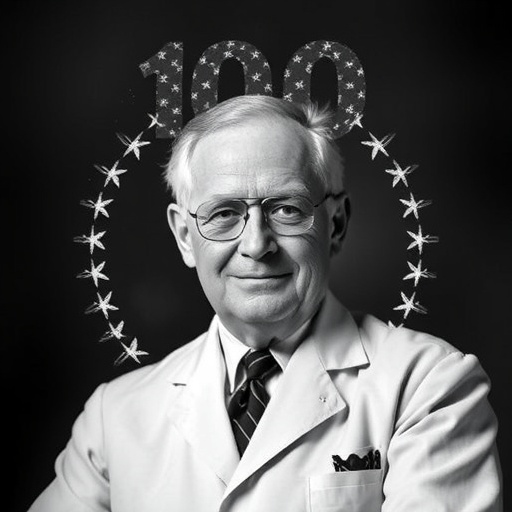On Saturday, September 27th, the world commemorates the centenary of Sir Robert Geoffrey Edwards, a luminary whose groundbreaking work in reproductive medicine laid the foundation for the advent of in vitro fertilization (IVF). Collaborating with Patrick Steptoe and Jean Purdy, Edwards’ pioneering efforts culminated in 1978 with the birth of Louise Brown, the world’s first baby conceived through IVF. This revolutionary achievement not only transformed infertility treatment but also instigated profound demographic and societal impacts that continue to unfold decades later.
The trajectory of IVF since its inception reflects a remarkable expansion in both technological refinement and accessibility. Originally a highly specialized and experimental procedure, IVF today benefits from advancements that have simplified protocols, enhanced safety profiles, and optimized success rates. These improvements have resulted in a procedure that is more patient-friendly, less invasive, and more widely available across diverse healthcare settings globally. Such progress underscores IVF’s role not merely as a clinical intervention but as a transformative social innovation enhancing reproductive autonomy worldwide.
Despite the Nobel Committee’s 2010 announcement honoring Sir Robert Edwards with the Nobel Prize in Physiology or Medicine, recognizing IVF as a milestone in medical science, the scale of IVF’s impact was already far surpassing early estimates. At that point, approximately four million IVF-conceived individuals had been born, but today conservative estimates place this figure at around 20 million. This exponential growth epitomizes IVF’s establishment as a cornerstone of reproductive medicine, fundamentally altering the landscape of human reproduction.
National registry data affirm that IVF births continue to surge annually, with contemporary figures nearing half a million each year worldwide. Projective demographic analyses authored by Roger Gosden and colleagues assert that by the century’s end, assisted reproductive technologies could account for nearly 3.5% of the global population, translating to an awe-inspiring 394 million individuals. These projections reflect not only technological adoption but also evolving societal norms regarding family planning, fertility preservation, and reproductive choice.
Economic factors, notably the presence or absence of state funding for IVF, significantly influence access and uptake. In countries such as Denmark, Belgium, and Australia, where fertility treatments receive public support, the penetration of IVF births within younger populations can reach as much as 10%. In contrast, mixed private-public models, like in the United Kingdom, yield lower prevalence rates, approximately 3% of children born via IVF. These disparities highlight how healthcare policy frameworks directly shape reproductive outcomes and demographic patterns on national levels.
Beyond sheer numbers, the qualitative advances in IVF have directly enhanced patient experience. Shortened treatment cycles, minimized pharmaceutical loads, fewer side effects, and a decline in procedural complications exemplify the technological and clinical progress achieved. According to reproductive specialist Professor Nick Macklon, these refinements have not only elevated the clinical success of IVF but also fostered broader acceptance and adoption, especially among populations previously deterred by the burdens of fertility treatments.
Simultaneously, IVF has emerged as a pivotal intervention against global demographic challenges. Numerous countries grapple with steady declines in fertility rates, often falling below the replacement threshold of 2.1 children per woman, a phenomenon exacerbated by delayed childbearing. Recent statistical data from England and Wales underscore this trend, reporting a record-low fertility rate of 1.41 children per woman for 2024, while the average parental age steadily rises. Similar declines are observed across the United States and southern Europe, where cultural and socioeconomic dynamics influence reproductive choices.
Advancing maternal age directly correlates with diminished ovarian reserve and oocyte quality, leading to elevated infertility risks beyond the age of 35. While IVF cannot rejuvenate or enhance egg competence, it offers a viable pathway for conception when natural fertility declines, accommodating age-related reproductive constraints. However, the role of IVF in demographic recovery remains marginal, as assisted reproductive technologies primarily address individual medical needs rather than fundamentally reversing population-wide fertility trends.
Recognizing these demographic complexities, some governments have begun integrating IVF support into broader reproductive policies. China’s recent initiatives to expand IVF access through public insurance schemes and subsidies exemplify strategic policy shifts designed to mitigate plummeting birth rates. Such steps embody a nuanced acknowledgment of IVF’s potential to supplement, though not replace, comprehensive demographic strategies including social, economic, and cultural incentives for childbearing.
Expert commentary from Juan Garcia Velasco, co-chief editor of Reproductive Biomedicine Online, emphasizes the strategic utilization of IVF within demographic interventions. By removing biological barriers to conception for individuals and couples facing infertility, IVF unlocks latent fertility potentials, thus facilitating family formation in contexts otherwise constrained by medical or age-related infertility. Although IVF does not constitute a structural solution to demographic decline, it represents a critical adjunct within multifaceted population policies aiming to sustain societal vitality.
Looking forward, the enduring legacy of Sir Robert Edwards and his colleagues transcends the quantifiable birth statistics. The technology they pioneered heralds an era where reproductive medicine continuously evolves and adapts, potentially addressing future fertility challenges wrought by demographic shifts, environmental stressors, and emerging health issues. The centenary of Edwards’ birth is a timely moment to reflect on the profound scientific, social, and ethical dimensions of IVF’s impact across global populations.
Moreover, the story of IVF is emblematic of an interplay between innovation, policy, and human aspiration. Beyond the clinic walls, IVF challenges traditional notions about reproduction, parenthood, and family structures, fostering a more inclusive understanding of fertility that accommodates diverse circumstances and identities. As IVF technologies advance, coupled with genomic and cellular biology breakthroughs, the horizon of reproductive possibilities expands—raising compelling questions about the future of human development.
Finally, the progress witnessed over the last century underscores the reciprocal relationship between medical science and societal evolution. Sir Robert Edwards’ pioneering spirit embodies this synergy, illustrating how rigorous scientific inquiry combined with compassionate application can yield interventions of profound personal and collective significance. As IVF continues to shape the demographic and biomedical landscapes of tomorrow, recognizing its origins and honoring its pioneers remains essential.
Subject of Research: Human in vitro fertilization (IVF) and its demographic impact
Article Title: Celebrating a Century: The Enduring Impact of Sir Robert Edwards on IVF and Global Reproduction
News Publication Date: September 27, 2025
Web References:
https://doi.org/10.1016/j.rbmo.2025.105052
http://doi.org/10.1016/j.rbmo.2018.01.006
References:
Fauser BJCM, Macklon N. The contribution of private and public centres to innovation in fertility care: acknowledging the past and preserving the future. Reprod Biomed Online 2025; 51.
Faddy MJ, Gosden MD, Gosden RG. A demographic projection of the contribution of assisted reproductive technologies to world population growth. Reprod Biomed Online 2018; 36: 455-458.
Image Credits: Photograph from the archives of Reproductive BioMedicine Online
Keywords:
Human reproduction, Infertility, Obstetrics, Artificial insemination, Female fertility, Prenatal care
Tags: advancements in reproductive medicinecentenary of IVF pioneerglobal accessibility of IVFin vitro fertilization historyinfertility treatment evolutionIVF technological improvementsLouise Brown first IVF babyNobel Prize in Physiology 2010reproductive autonomy and IVFSir Robert Edwards legacysocietal impacts of IVFtransformative social innovation in healthcare






